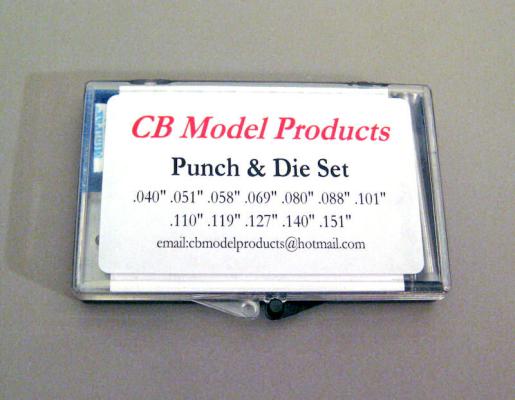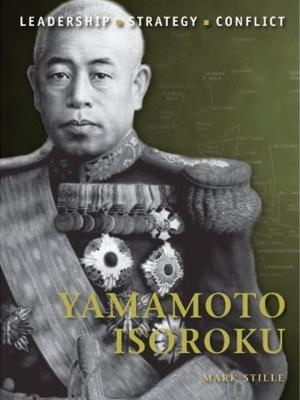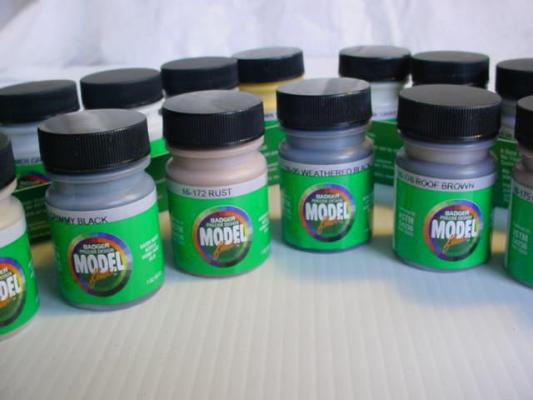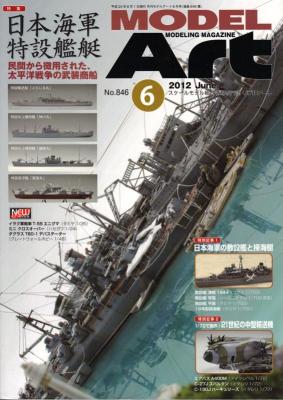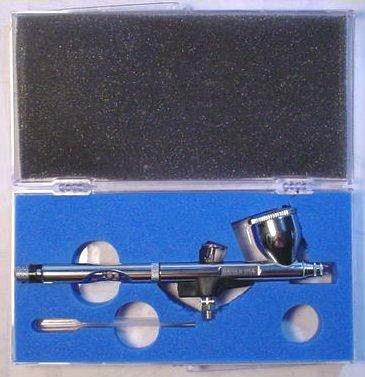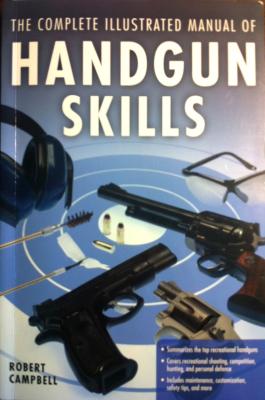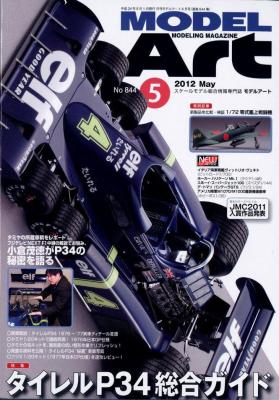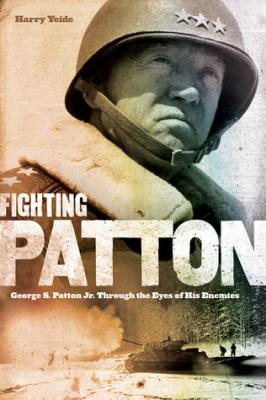ModelArt No. 850 August 2012 monthly update features Russian Sukhoi jets – Building Model Kits of Sukhoi Su-27, Su-30, Su-35 and Su-37 Flanker. As always, the format is close to 7x10 inches in size, and the printing and reproduction quality are excellent. Model Art text is almost entirely in Japanese language, and most feature photos are in color. The usual sections follow and are listed by their topic:
This latest tool from CB Model Products is one of the best yet. This high precision punch and die set consists of 12 hardened steel punches and a clear acrylic/metal guide plate assembly. There is a desiccant included to help keep the rust off the metal parts. These pieces are contained in a compact plastic case with a nice hint and procedure sheet.
The steel punches are machined with a slight angle. These punches are designed to be used on up .030 styrene. The punches come in .040”, .051”, .058”, .069”, .080”, .088”, .101”, .110”, .119”, .127”, .140” and .151”. That should take care of most needs in 1/72, 1/48, 1/32, and 1/35th scales. You may want to wipe the parts down with some WD-40 and a rag to preserve these delicate parts for the long term.
Admiral Yamamoto Isoroku is largely regarded as the archetypal Japanese naval commander of World War II, and his reputation remained high in the Imperial Japanese Navy (IJN) despite numerous naval defeats. In his short book, Mark Stille undertakes a critical analysis of Yamamoto, calling into question his reputation as both a reluctant warrior and a brilliant and invincible admiral.
After receiving them for review from Badger, I was very pleasantly surprised at the ease of use and quality of these paint sets. For years, I was a Gunze Guy but the supply of Gunze dried up. I transferred to Tamiya and have used it since the Gunze sunset. I had never used Badger paint until I was given the opportunity to review some of Badger’s paint contained in some of their color sets.
Being an HO scale model railroader, I was very interested in Badger’s “RAILROAD ROLLING STOCK #1701,” which contains Engine Black, Reefer White, Reefer Gray, Reefer Yellow, Reefer Orange, Dark Tuscan Oxide Red, and Light Tuscan Oxide Red. I am now a fan of this particular set of paints and, in particular, like the Engine Black and Tuscan Oxide Red. Both are easily airbrushed and give that wonderful flat and aged color that I treasure when working on a piece of rolling stock or motive power.
Badger also provides several other Railroad related paint sets. They are:
All new from the elves at Alclad II, a new line of finishes (this time, enamels with a mineral spirits base) primarily for automobiles, and trust me when I say, you need to try these for yourself. First up, a bright silver base has been created that may be sprayed DIRECTLY on to the plastic, without primer. I must admit that I was somewhat skeptical until I tried it, and it is, without a doubt, exactly as advertised. Images show not only the various colors as painted on a series of 34 Ford Coupes, but also an effort of my own on an old “Snaptite” Monogram Corvette, further referred to as the “Candy Dish Corvette.”
For those who are familiar with Model Art Modeling Magazine, it never disappoints and the June 2012 issue is not an exception. The quality of the images and the wide range of subject matter covered is a hallmark for this magazine. Keep in mind that the publication is printed in Japanese but, as we all know, “a single picture is worth one thousand words” regardless of the language.
This issue begins with a stunning diorama entitled, “Mogami’s Broken Beak”. Using a Tamiya Mikuma, a Pitroad Akashi (Repair Ship), a Fujimi kit of a Japanese naval special auxiliary tanker, and a Hasegawa Japanese sub, this diorama shows a very busy day in the life of the repair crews and their vessels as they struggled to repair the damaged Mogami. This diorama is absolutely fantastic!
From time to time, one gets the opportunity to review a finely crafted and indispensable item such as an airbrush. Badger recently provided a copy of the “Renegade Krome,” along with an assortment of Badger acrylic paint to IPMS/USA, and it, indeed, is an excellent airbrush.
First, there is a treasure trove of information on the Badger website about the Krome, including an informative and excellent video. To view this video, please visit https://www.youtube.com/watch?v=2JBaqBK1kU4&feature=youtu.be
The title of this book is somewhat misleading. Very little of it has to do with “handgun skills,” with that taken to mean skill with a handgun. A look at the cover indicates this, showing a target, shooting glasses, and three pistols, but also a couple of cartridges, ear protectors and cleaning materials. It's really a personal look at handguns, attempting to cover all of the bases and not delving too deeply into any of them.
This is a monthly publication from Japan that covers all manner of modeling subjects, ranging from finished models to kit reviews and model building tips, and includes many advertisements. Finding it on the shelves of bookstore in the US is a bit of a challenge, but it can be found online at a number of sites. It is printed on glossy paper, measures 7 1/8” by 10 1/8”, and contains 172 pages. The photo quality (a mixture of full color and black and white) is excellent. Unfortunately, for those who don’t read Japanese, it serves as a great picture book, because (with the exception of some headings and subheadings) the text is entirely in Japanese.
We think of General George S. Patton Jr. as one of our greatest combat leaders in World War II. Certainly our “fightingest” General, and someone who must have been a constant threat to the enemy. Did the Germans fear this hard-charging tank commander and watch his every move? The answer may surprise you. There have been many books written about General Patton, but the author says “This is the book that hasn’t.” And one would have to agree with him, as Fighting Patton is more about German generals than it is about Patton. Author Harry Yeide has searched German archives for reports from the men who faced Patton on the battlefield to see how they fought him and what they thought of his leadership skills.
German generals such as Hasso von Manteuffel, Paul Hausser, Gerd von Rundstedt, and many more appear in this book. It’s interesting to note that all of Patton’s counterparts had much more combat and leadership experience than Patton did.


